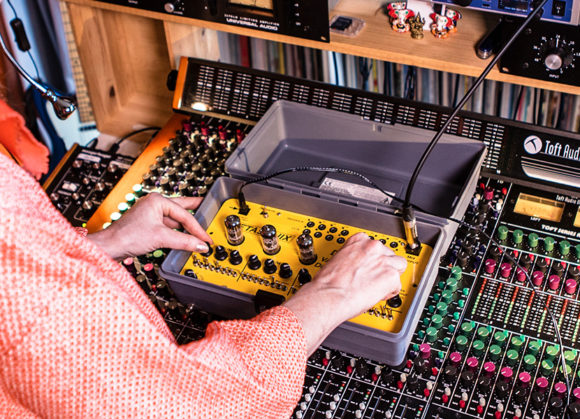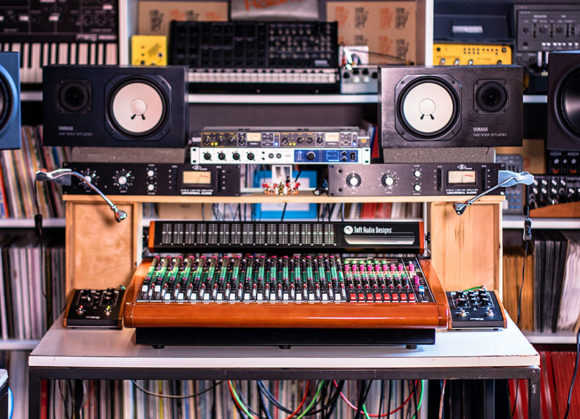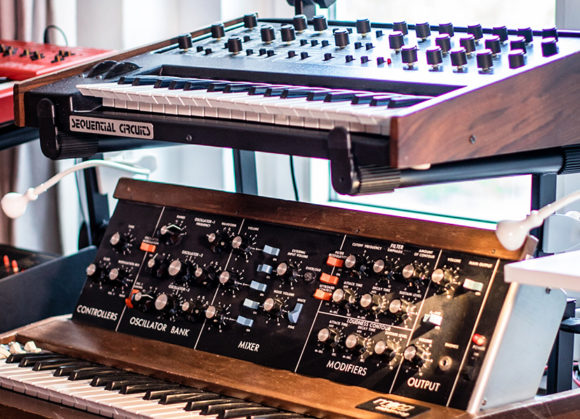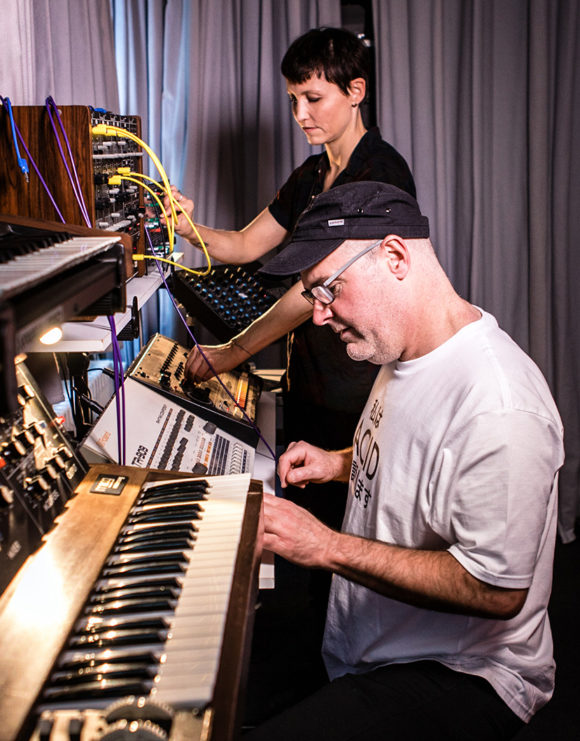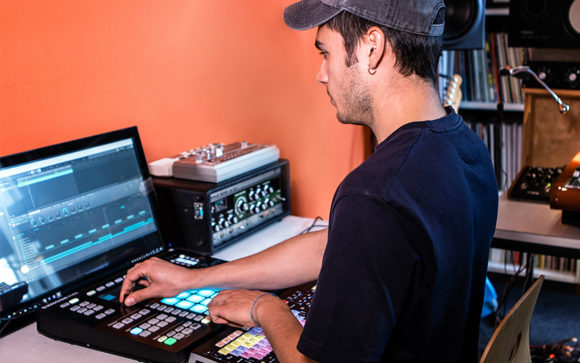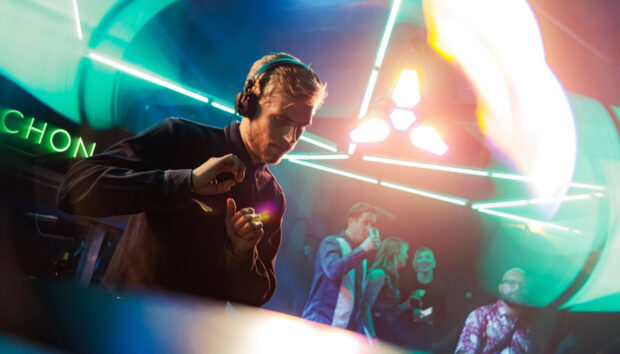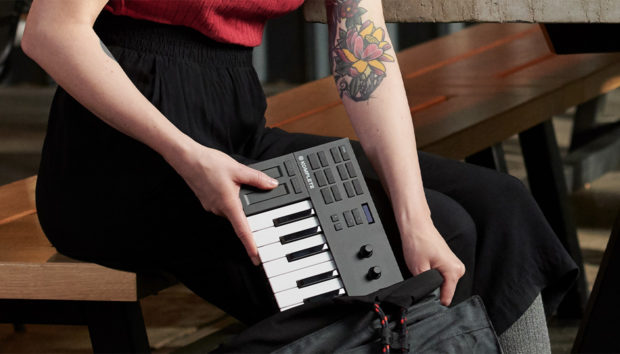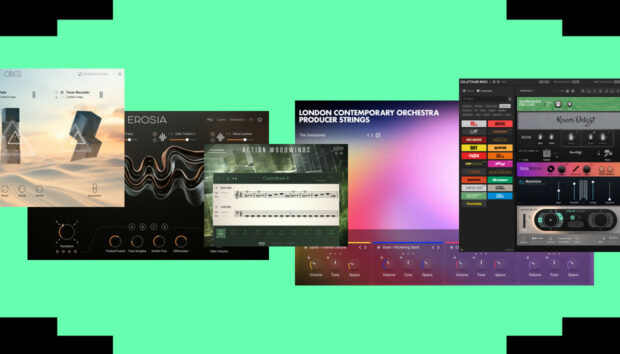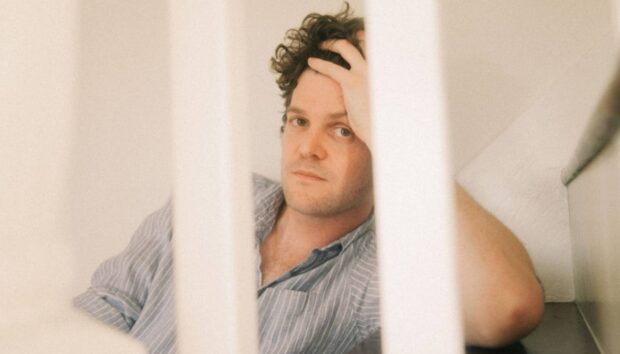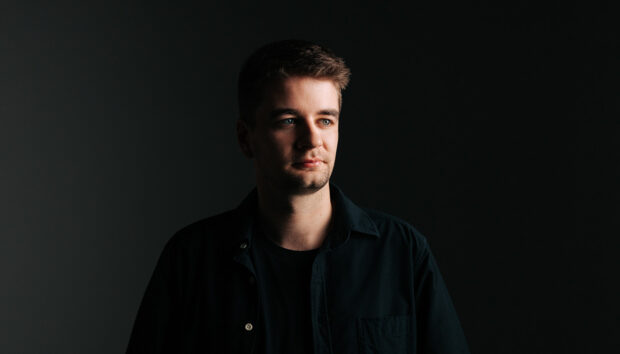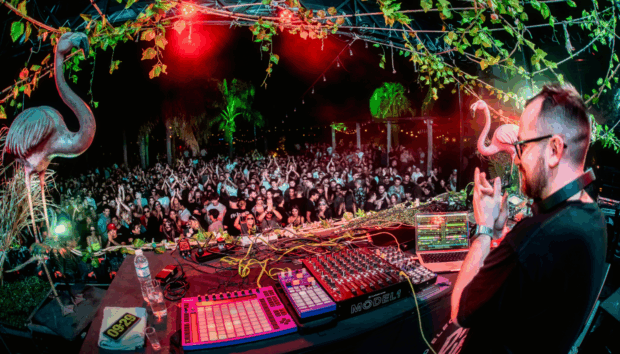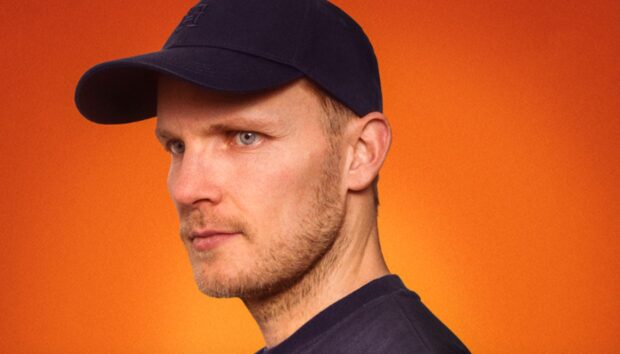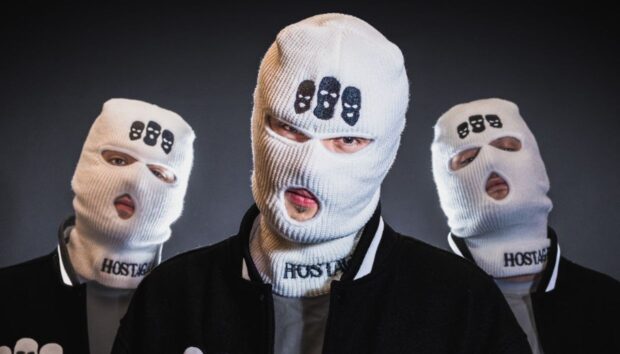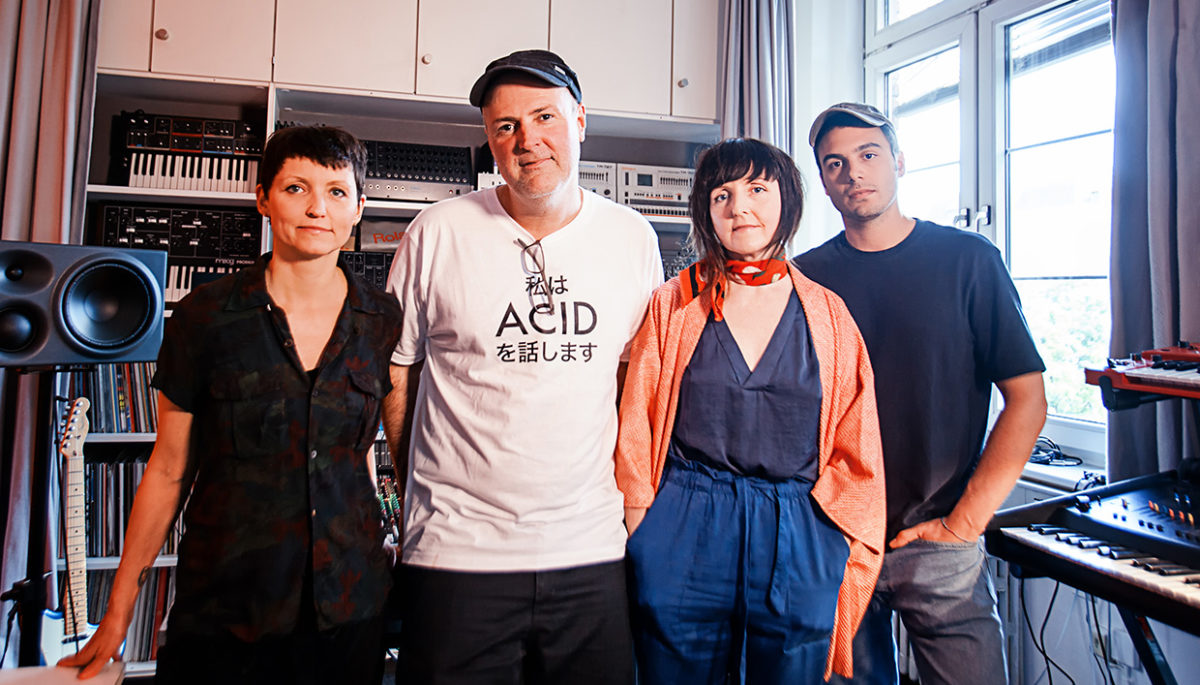
Shining a light on 30-years of electronica, the new Expansion, WARPED SYMMETRY embodies the vintage aesthetics of classic analog, early 90s rave culture. Providing a broad spectrum of content for electronic-based song ideas, WARPED SYMMETRY includes drum kits, loops, samples, and synth presets that were meticulously created in co-operation with Berlin-based sound design and production unit IRRUPT Audio.
Scroll to the end to hear audio demos from WARPED SYMMETRY in full, or click here to check out the product.
Based in Berlin’s northern district Wedding, the IRRUPT Audio team are responsible for previous Expansions, including District Xeo, and Carbon Decay.
With the release of WARPED SYMMETRY, we checked in with studio-head and IRRUPT Audio CEO Jay Ahern to dive deeper into the team’s creative processes. Accompanied by the studio’s production team Nina Hynes, Andrea Lancellotti, and Magda, we take a rare glimpse into the behind-the-scenes working of one of Berlin’s finest production houses.
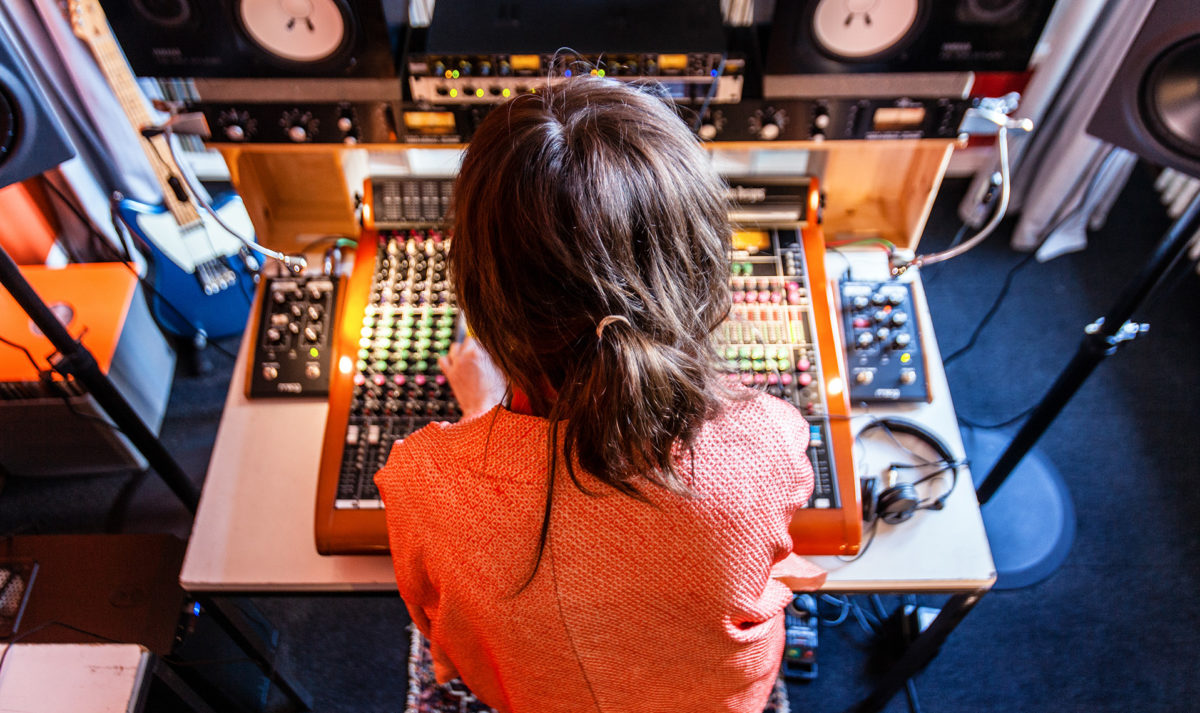
Who is behind the IRRUPT Audio team?
The founding team include Eloy Lopez, Bradley Roulier, Christina Duran, Steve Blakley, and myself. Eloy and Brad are the original founders of Beatport and Christina is one of Beatport’s first employees. I met them while working at Beatport HQ in Denver a few years ago, they later introduced me to Steve Blakley who runs The Firm Graphics in Denver. Steve and my wife Maike Ahern created the visual identity of IRRUPT.
We also brought in Magda. The idea was that we wanted to do sound design, we wanted to do something that involved a lot of talented musicians.
So we just thought to ourselves, “Let’s talk to the musicians we know about doing sounds and get them work”. We offered them the possibility to do this anonymously. We want the end-user’s interpretation sound be their own, thinking of how it can be done, rather than naming who did the sounds in the first place. We all came up through techno in the 90s, where there is a lot of anonymity, so we kinda play with that as well.
What careers do the studio team have outside of IRRUPT Audio?
Nina Hynes came through independent rock and we knew each other when I was working with Domino. Nina has worked with Hector Zazou and Harold Budd, and is somebody who says: “sure I’ll come along with you”. Magda, Nina and I are also part of Blotter Trax which is our live music project. We made our UK live performance debut at fabric earlier this year and also toured Japan. Blotter Trax will return to the UK in August to perform at the Houghton Festival, which is curated by Craig Richards. A new single will be released by Frustrated Funk, the in-house electro label of Clone Records in the Netherlands.
Which other Expansions have you created?
Carbon Decay was our very first one, which focused on industrial techno. We have quite a few producers who are well known in that genre and contributed the sounds, which our team put together.
District Xeo was the second, and I have to credit Jeffrey Horton at Native for his encouragement. I was really inspired by electro again and saw it as the DNA for so many forms of modern electronic music. I had been working with Magda, who was also deeply inspired by the genre. She and I were introduced by mutual friends Ectomorph from Detroit.
Our chief engineer Andrea Lancelotti pulled all of that wild inspiration together in the studio. We also asked one of our contributors, Fabien from dOP to perform all the MIDI. He is classically trained and did it all without a quantizer so the MIDI performances in that pack are gold. There were also other contributors who are electro artists, as well as artists who are working in genres inspired by electro. I wanted to draw a line from past to present and make it musically inspiring for anyone making beats, whatever the genre.
What other sound libraries have you produced?
The idea for the original IRRUPT Audio sample pack came from my friend John Tejada. John played some sounds for me, and I just threw them into Ableton Live and started firing the clips randomly. I realized it was just like a composition, like an-almost generative, music pack. I called up John and said “John, did you do this on purpose?”. And he was like, “No, that was just the flow”. I realized that was pretty neat. It was like something you could play a live set with.
After that, we started working with other artists, which was the idea behind IRRUPT Audio. We said to them, “Look, give us some music and it’s all gonna work together.”
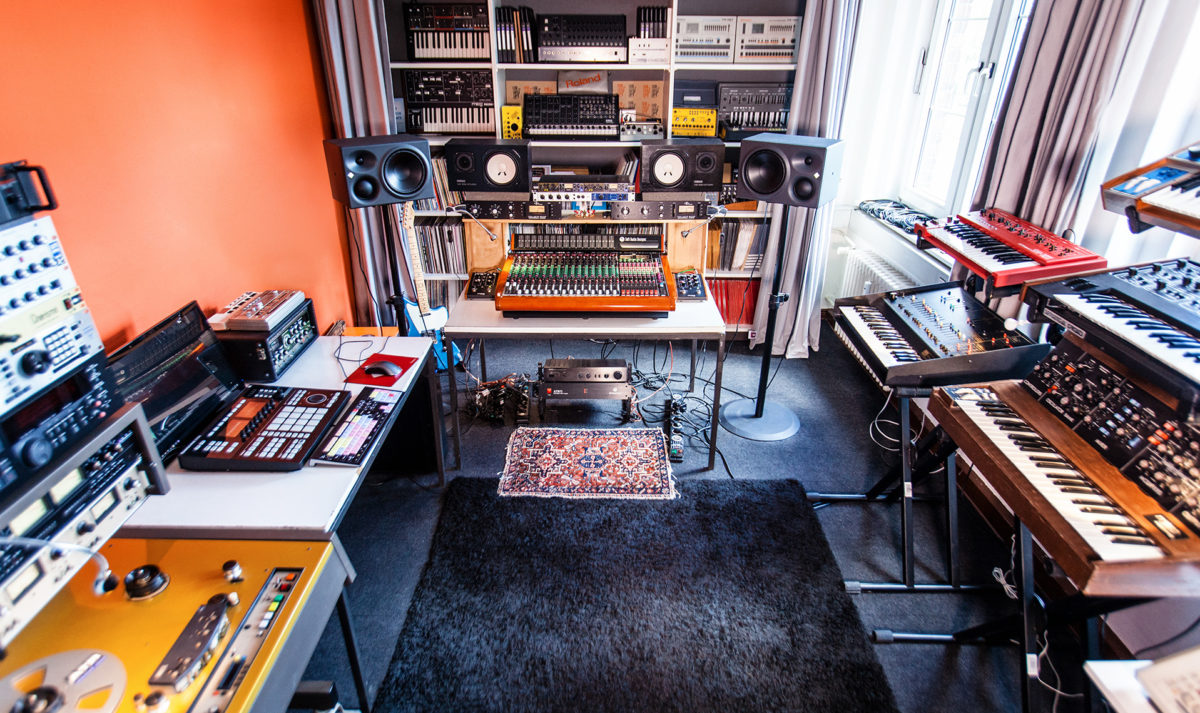
You have an impressive array of new and vintage synthesizers here. Could you guide us through some of the highlights?
We’re kind of modular crazy. We have a lot of vintage here, but in the modular world, it’s Cwejman, Three Sisters, and of course, the Metasonix stuff. We also toured with a Roland System 100m, it was insane. And then Magda bought the Deckard’s Dream – I think that’s the major piece in there right now. That’s like three or four thousand grand worth of synth. The Cirklon is also fun. We love the modern stuff. The vintage stuff is important because if you know how good the vintage stuff is, and it’s well maintained, you know what to listen for with modern stuff.
Brendan from Ectomorph, he’s a friend of ours, said something beautiful about modular synths which is so correct. He said, they’re like little art pieces, and it’s all art but not everyone is gonna work on a track that is musically usable. We always listen out for the stuff that works. Also, we’re talking to people that come in while touring and we ask them what they’re using and they bring their stuff too.
What was the recording process for this Expansion like, and how did you make it sound like it does now?
The idea with Warped Symmetry was to make a sort-of electronic-musician songwriting toolkit. For example,it could be used by an R&B producer, someone like Kaitlyn Aurelia Smith or if even Earth if they wanted to, not that they would.
We realised that we had to just make everything more granular. We had done a couple of expansions at that point, so we sat down and did more presets for Massive and Monark, a couple of multi-sampled instruments are in there, and a lot of MIDI-information.
What is included in the Expansion?
There are MIDI-files, loops, one-shots, a lot of patterns, three to five patterns per group, like mini-songs from 80BPM to 130BPM. So it’s a wide range of possibilities.
We also did something different with the note input. I have a guitar in the studio and it’s funny how a lot of electronic musicians played the guitar when they were younger. There’s this really good software, Jam Origin. Basically, it takes note information from the guitar audio and converts it to MIDI.
Then, we also work with a young British Jazz Musician based in Berlin named Robert York. Robert is also a music educator, specialized in music theory. I brought Robert in to put some manners on our electronic asses and ensure that our musical phrasing is on point. This makes for a dynamic Expansion, to complement awesome sounds with excellent and super usable MIDI files.
How did you incorporate the theme of 30 years of electronica into the Expansion?
Back in the early 90s, I guess it was called IDM. We’re talking about B12, early WARP Records, Stasis. It’s funny, we see a lot of younger artists who are obsessed with it. And it’s crazy because it makes me feel less old. Andrea is coming from that world, too. He did a record with 7th Sign Recordings. We have a huge appetite for music, we just don’t listen to one genre, we listen to everything in the studio. We were listening to SZA and she did one track on her album that sounded like a Lali Puna or Notwist track. We were like “what?!”
We knew a lot of Maschine users work with more urban styles. We love the way that they just work with sound, so we thought: “What if we did this and let it out in the world and see what happens with this.” And that’s kind of how it happened, hoping that it would end up in a song that blows our minds. If you give people stuff that’s authentic, it inspires them.
While producing Expansions you also work closely with the sound designers at Native Instruments, how does this cooperation look like?
With all our Expansions, our go-to person when it comes to sound design is Angelos Liaros. I am a strong believer in collaboration, and the end-goal is to evolve the product beyond what anyone would’ve expected. To deliver the best thing we could’ve done in which our collective experience as producers and performers dictate as to what makes an essential toolset.
photo credits: Yvonne Hartmann








